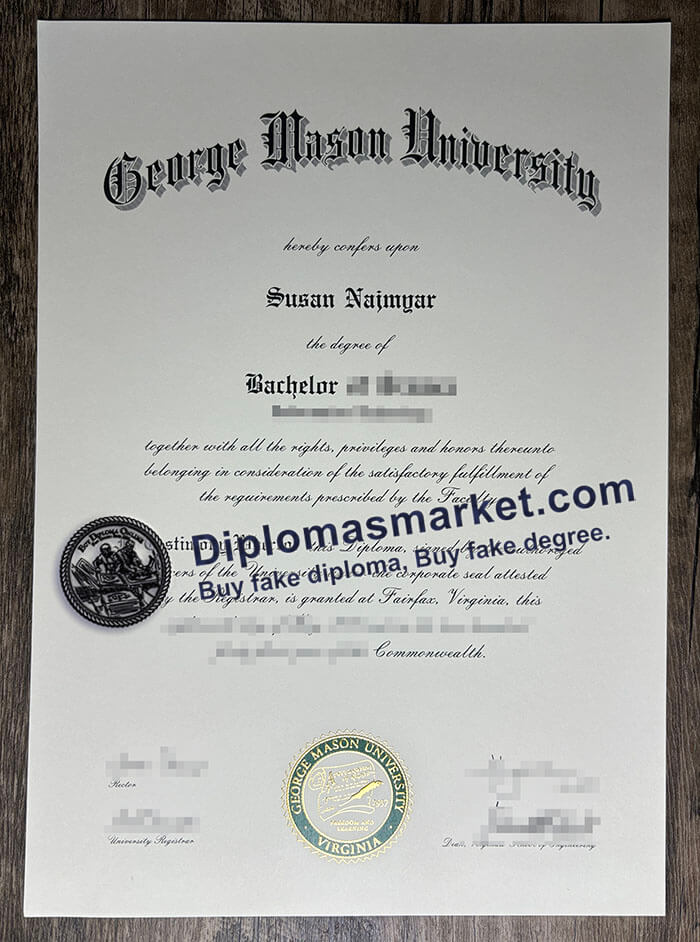
George Mason University diploma
How to buy fake George mason university diploma? Sells the best quality George Mason University degree online. George Mason University (Mason or GMU) is a public research university in Fairfax County, Virginia. The university was originally founded in 1949 as a northern branch of the University of Virginia. Named for Founding Father of the United States George Mason in 1959, it became an independent university in 1972. The school has since grown into the largest public university in the Commonwealth of Virginia. Mason operates four campuses in Virginia (Fairfax, Arlington, Front Royal, and Prince William), as well as a campus in Incheon, South Korea. The flagship campus is in Fairfax.
In 1949, the University of Virginia created an extension center to serve Northern Virginia. The extension center offered both for credit and non-credit informal classes in the evenings at various pre-existing venues. The first for credit classes offered were: “Government in the Far East, Introduction to International Politics, English Composition, Principles of Economics, Mathematical Analysis, Introduction to Mathematical Statistics, and Principles of Lip Reading.” By the end of 1952, enrollment was 1,192 students. Buy fake degree online. Where to make GMU transcript? Purchase a GMU degree certificate.
The university’s Fairfax Campus is situated on 677 acres (1.058 sq mi) of landscaped land with a large pond in a suburban environment in George Mason, Virginia, just south of the City of Fairfax in central Fairfax County. Off-campus amenities are within walking distance and Washington, D.C. is approximately 20 miles (32 km) from campus. Notable buildings include the 320,000-square-foot (30,000 m2) student union building, the Johnson Center; the Center for the Arts, a 2,000-seat concert hall; the 180,000-square-foot (17,000 m2) Long and Kimmy Nguyen Engineering Building; Exploratory Hall for science, new in 2013; an astronomy observatory and telescope; the 88,900-square-foot (8,260 m2) Art and Design Building; the newly expanded Fenwick Library, the Krasnow Institute; and three fully appointed gyms and an aquatic center for student use. The stadiums for indoor and outdoor track and field, baseball, softball, tennis, soccer and lacrosse are also on the Fairfax campus, as is Masonvale, a housing community for faculty, staff and graduate students. The smallest building on the campus is the 33-square-foot (3.1 m2) information boot.

 USA Diplomas
USA Diplomas Canada Diplomas
Canada Diplomas UK Diplomas
UK Diplomas Australia Diplomas
Australia Diplomas Germany Diplomas
Germany Diplomas Malaysia Diplomas
Malaysia Diplomas Singapore Diplomas
Singapore Diplomas Other countries
Other countries Transcript-Form.xlsx
Transcript-Form.xlsx
